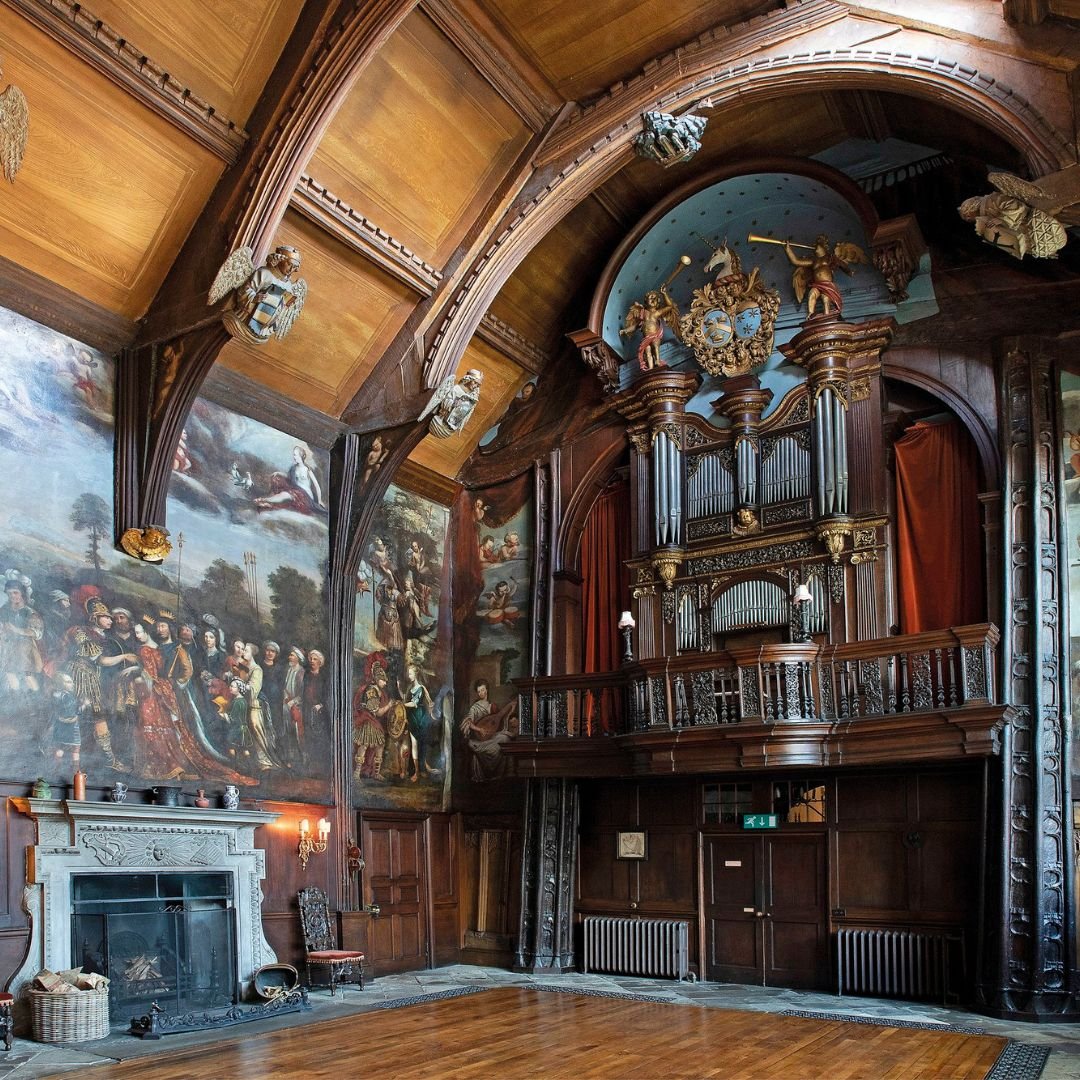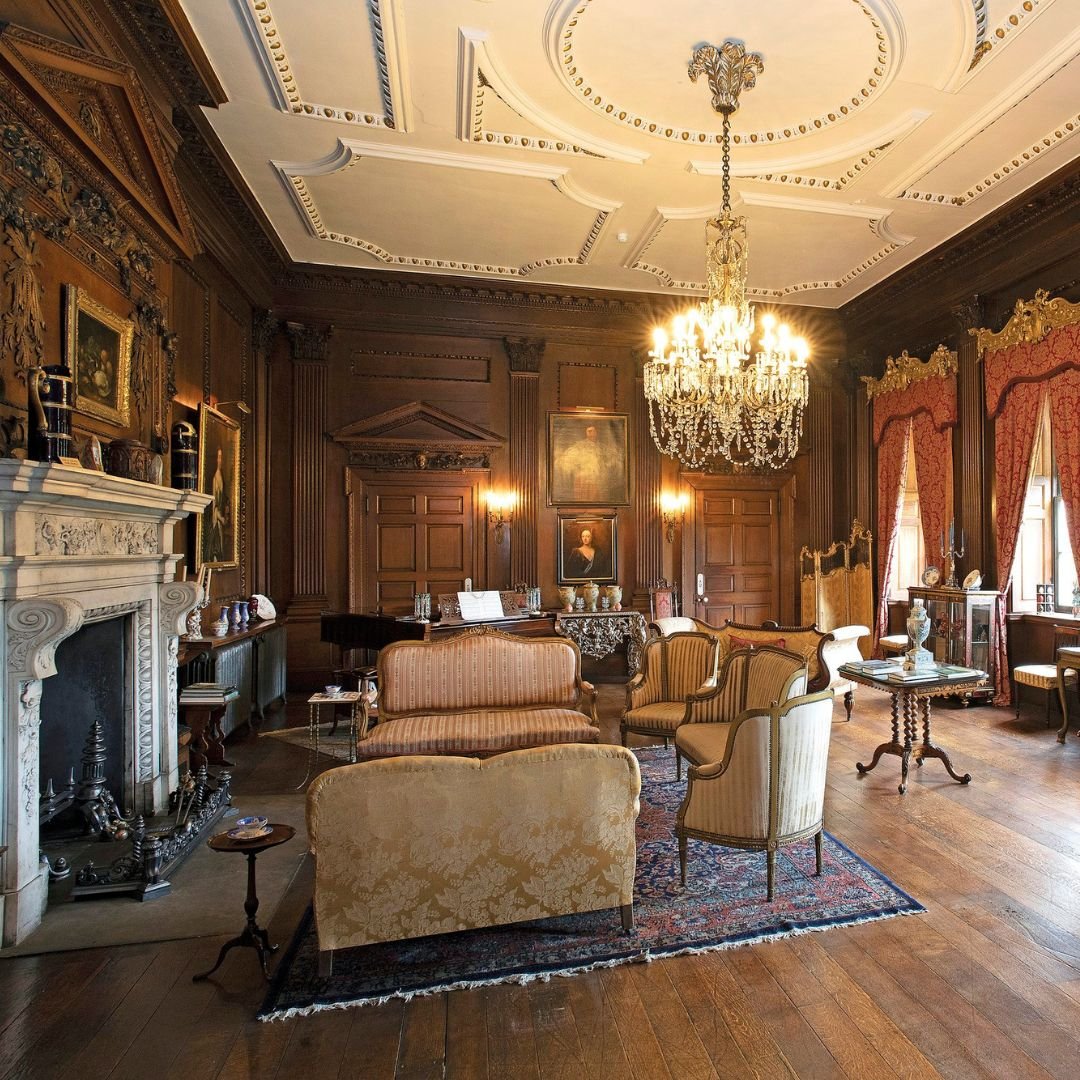Adlington Hall Estate: 700-Year-Old Gem Hits Marks For £30 Million
The Grade I listed Adlington Hall Estate in Cheshire hit the market for a whopping £30 million.
Credit: Mark Wiggin Estate Agents
The 1,921-acre Adlington Hall estate features the stunning Adlington Hall, a quadrangular building set around a central courtyard.
Built on the site of a Saxon hunting lodge, it has been the seat of the Legh family since 1315.
The luxurious property has a jaw dropping interior.
The origins of Adlington Hall can be traced back to Saxon times where Earl Edwin built a Hunting Lodge.
Norman Earls held Adlington for seven generations until 1221 when it passed to the Crown.
Henry III passed the manor to Hugh de Corona who daughter Lucy had one son, Thomas and two daughters - Ellen and Isabel.
Ellen married John de Legh of Booth and during the reign of Edward II, Thomas, granted Adlington to Ellen and John for their life with the remainder to Robert, their second son.
From thereon, Adlington became the ancestral home of the Legh family and has remained in their hands to the present day - over 700 years.
Adlington Hall is a truly outstanding example of a house with a rich architectural history.
It has a distinctive Tudor façade to the east and an impressive and imposing Georgian front to the south.
The Hall is quadrangular in shape and records show it was once surrounded by a moat.
The Great Hall was almost certainly half-timbered throughout in the black and white style synonymous with the Tudor period and Cheshire.
As a Royalist garrison, held for the Crown during the Civil War, the moat at Adlington was put to defensive use.
At the end of the war, Colonel Thomas Legh the Younger recovered the property in 1656 and was appointed High Sheriff of Cheshire.
After two sieges and years of neglect, restoration work was carried out in 1660 to the north front of the house.
The gardens and grounds hold as much historic interest as the house and have a rich botanical and architectural story to tell.
Once a medieval deer park, the landscaped park, pleasure ground and formal garden as you see today date back to the eighteenth century.
Colonel Legh, who inherited Adlington in 1739 is credited with laying out a formal water garden north of the Hall and to the south the pleasure gardens known as The Wilderness.
Most of the grounds are laid to lawn and pasture with the River Dean meandering through the park and pleasure ground.
To the north of the Hall is a sunken lawn and scented Rose Garden, Laburnum Arcade, Bee-Bole wall and Yew Maze with a unicorn at its centre – the family emblem.
To the west is historical parkland and the River Dean, along with a parcel of woodland.
At the woodland edge are four timber stables, a tack room and feed room which are now used as garden stores.
From the front of the Hall, looking south your eyes are immediately drawn to the Wilderness gates which date back to 1688, these lead to the Dutch Lime Walk which was planted to commemorate the accession to the throne of Prince William of Orange and Queen Mary.
The Wilderness is a wonderful example of a woodland garden with several follies, eye catchers and specimen trees.
The Wilderness and its hidden structures have survived many hundreds of years under the Legh family’s careful management.
The walks through the Wilderness are utterly charming throughout the seasons, from the spring months when swathes of Rhododendrons are in full bloom, to summer days when the sun beams break through and make dapple shade.
There are a number of walks and paths through the Wilderness and the river meandering through makes for a calm and romantic place.
The Wilderness is also particularly beautiful in the Autumn months.
Check out more photos of the estate below, courtesy of Mark Wiggin Estate Agents:
If you’d like to find out more about the house, visit the Mark Wiggin Estate Agents website - as it’s currently on sale for £30 million.
If you enjoyed this blog post, please follow Exploring GB on Facebook for daily travel content and inspiration.
Don’t forget to check out our latest blog post below!
Thank you for visiting Exploring GB.





















